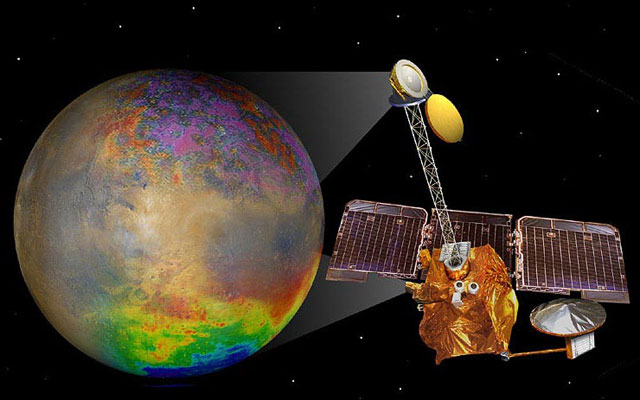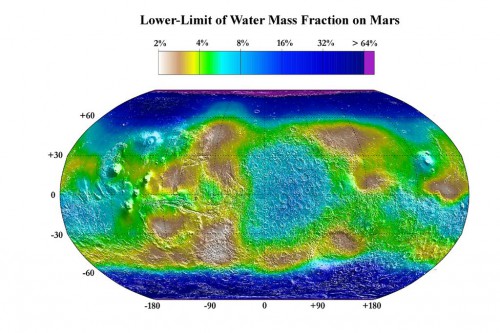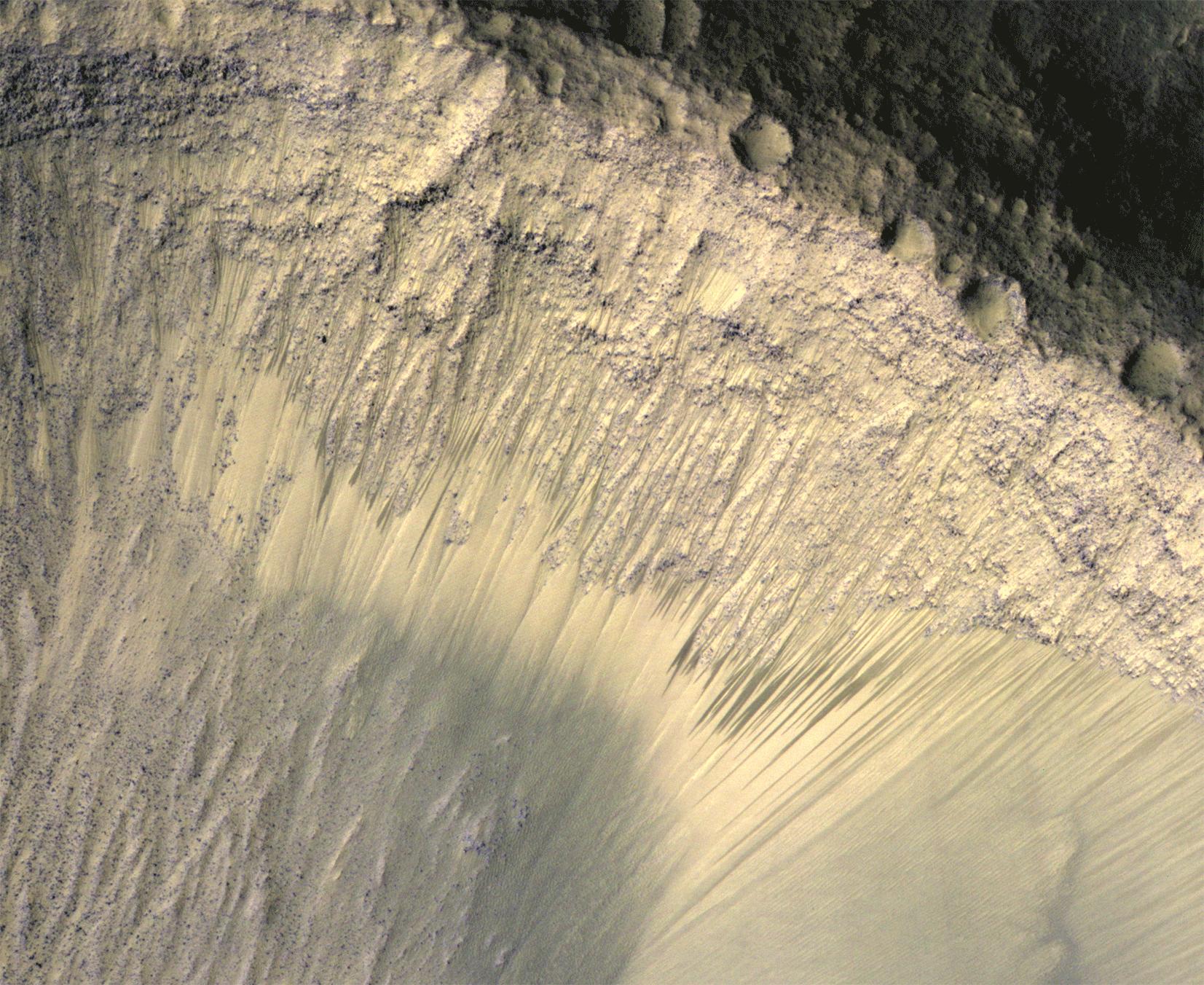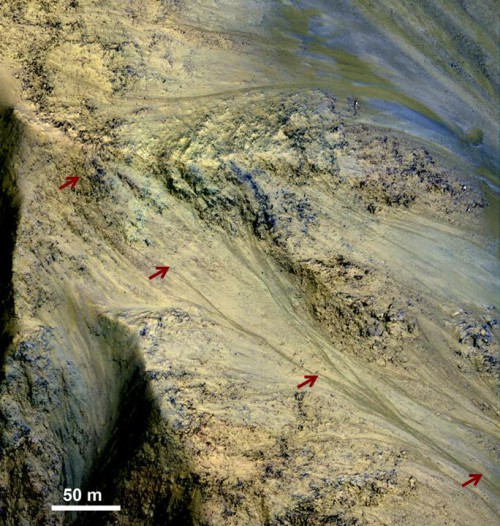
Engineers at NASA’s Jet Propulsion Laboratory (JPL) in Pasadena, Calif.—in cooperation with Lockheed Martin Space Systems of Denver, Colo.—recently fired up the thrusters on the space agency’s longest-serving Mars explorer in an attempt to study the planet’s surface during Martian dawn. Mars Odyssey, which has been exploring the Red Planet since 2002, is now set up for an orbit which will, for the first time in its 12 years of service, give researchers back on Earth a chance to observe possible water processes happening on the ground in morning daylight—something no NASA Mars orbiter has had a chance to do since the twin Viking orbiters in the 1970s.
“We’re teaching an old spacecraft new tricks,” said Odyssey Project Scientist Jeffrey Plaut of JPL. “Odyssey will be in position to see Mars in a more different light from ever before.”

The gentle maneuver, which took place on Feb. 11 courtesy of a 29-second burn from four thrusters on the spacecraft, will accelerate Odyssey’s drift toward a morning-daylight orbit to give scientists the first detailed observations of the Martian surface in the hours around sunrise. Other orbiters, from both NASA and the European Space Agency (ESA), have observed morning mists, fogs, clouds, and surface frost develop seasonally on the Red Planet, but so far have concentrated on afternoon observation times when views of the surface are less hazy.
It has been known for years that Mars did indeed have liquid water on its surface at some point; the aftermath is clearly visible all over the Red Planet’s desolate surface in the form of dried-up lake beds and river channels. On-site observations of rocks on the surface also prove the landscape was wet, with fast moving streams shaping the rocks and carving channels just like water does here on Earth. Round gravel—just like what is found at the bottom of streams here at home—is also found on Mars.
Odyssey’s orbit, which is synchronized with the Sun, brings it almost directly over Mars’ north and south poles—every spot it flew over on its dozen daily passes from north to south for its first six years at Mars the local solar time was about 5 p.m. The south-to-north leg of that orbit the time was about 5 a.m., which provided an advantage for Odyssey’s Gamma Ray Spectrometer to have its cooling equipment pointed away from the Sun while it checked for hydrogen near the Martian surface, which would be evidence for water. The spacecraft adjusted for a 4-o’clock orbit soon after, letting its Thermal Emission Imaging System (THEMIS) take advantage of the mid-afternoon warmth for infrared mineral mapping.
“We don’t know exactly what we’re going to find when we get to an orbit where we see the morning just after sunrise,” said THEMIS Principal Investigator Philip Christensen of Arizona State University. “We can look for seasonal differences. Are fogs more common in winter or spring? We will look systematically. We will observe clouds in visible light and check the temperature of the ground in infrared.”

Christensen proposed letting the time of the orbit shift past 6 o’clock, with daylight observations on the south-to-north half of the orbit occurring at about 6:45 a.m. NASA agreed, and Odyssey’s latest maneuver will put the spacecraft where the science team wants it in November 2015.
For several years researchers have also observed, from time to time, what looks like water flows on various slopes as surface temperatures rise. The features, which are typically less than 16 feet wide and no longer than 4,000 feet long, appear on both north-facing and south-facing walls of steep, rocky slopes in spring and summer, then fade as the temperatures drop with the coming of winter. Five well-monitored sites displaying these seasonal features are located in Valles Marineris, which is the largest canyon system in the entire Solar System, and new flows have been detected as recently as this month.
“The equatorial surface region of Mars has been regarded as dry, free of liquid or frozen water, but we may need to rethink that,” said Alfred McEwen of the University of Arizona in Tucson, principal investigator for MRO’s High Resolution Imaging Science Experiment (HiRISE) camera. “The explanation that fits best is salty water is flowing down the slopes when the temperature rises. We still don’t have any definite identification of water at these sites, but there’s nothing that rules it out, either.”
Putting Odyssey into an orbit for morning observations will (hopefully) yield insight about the composition of the ground and about temperature-driven processes—such as water flows and geysers fed by spring thawing of carbon-dioxide ice near Mars’ poles.
Researchers refer to the dark, finger-like flows as “recurring slope lineae,” or RSL, and they are the strongest indication of possible liquid water that may exist today on the Red Planet. The observations of these flows include corresponding seasonal changes in iron minerals on the same slopes, which support the suggestion that brines with an iron-mineral antifreeze, such as ferric sulfate, may flow seasonally—instead of the relatively clean water most people are familiar with.

“We still don’t have a smoking gun for existence of water in RSL, although we’re not sure how this process would take place without water,” said Lujendra Ojha, a graduate student at the Georgia Institute of Technology, Atlanta, and lead author of two new reports about these flows.
Recently, Ojha and Georgia Tech assistant professor James Wray found distinct and consistent spectral signatures of ferric and ferrous minerals at 13 confirmed RSL sites using images taken by NASA’s Mars Reconnaissance Orbiter’s (MRO) Compact Reconnaissance Imaging Spectrometer for Mars (CRISM) instrument, but they didn’t find any spectral signature tied to water or salts.
Spectral observations, however, might miss the presence of water, because the dark flows are much narrower than the area of ground sampled with each CRISM reading. Afternoon orbital observations, such as those conducted by Odyssey thus far, could also miss any morning moisture.

“Just like the RSL themselves, the strength of the spectral signatures varies according to the seasons,” said Ojha. “They’re stronger when it’s warmer and less significant when it’s colder.”
A sorting of grain sizes may explain these changes according to scientists, such as removal of fine dust from the surface. An increase in the more-oxidized (ferric) component of the minerals or an overall darkening due to moisture might be to blame as well—and all three explanations point to water. The leading hypothesis actually is the flow of near-surface water, kept liquid by salts depressing the freezing point of pure water and slowing the evaporation rate so brine can flow farther. Only future observations will prove whether or not these RSL features are truly liquid water flowing down steep slopes at Mars’ mid latitudes.
“The flow of water, even briny water, anywhere on Mars today would be a major discovery, impacting our understanding of present climate change on Mars and possibly indicating potential habitats for life near the surface on modern Mars,” said Mars Reconnaissance Orbiter Project Scientist Richard Zurek.
Once Odyssey is locked into its 6:45 a.m. morning-daylight orbit it will still have enough propellant left for another nine to 10 years of operation.
“NASA likes to ‘follow the water’ in exploring the Red Planet, so we’d like to know in advance when and where it will appear,” said Wray. “RSL have rekindled our hope of accessing modern water, but forecasting wet conditions remains a challenge.”
Want to keep up-to-date with all things space? Be sure to “Like” AmericaSpace on Facebook and follow us on Twitter: @AmericaSpace



